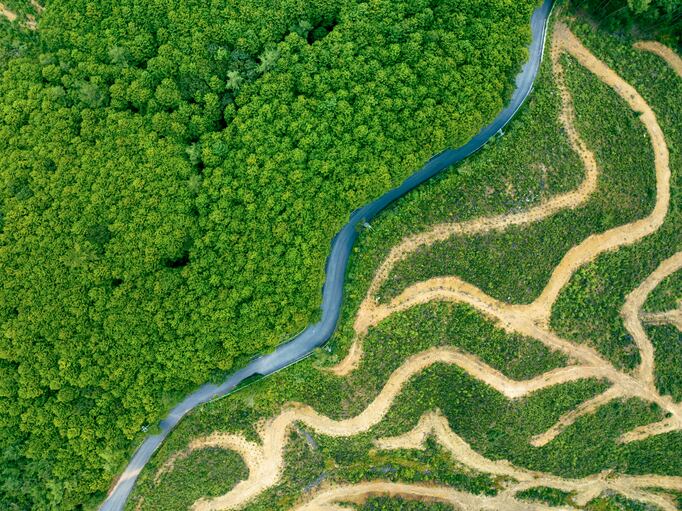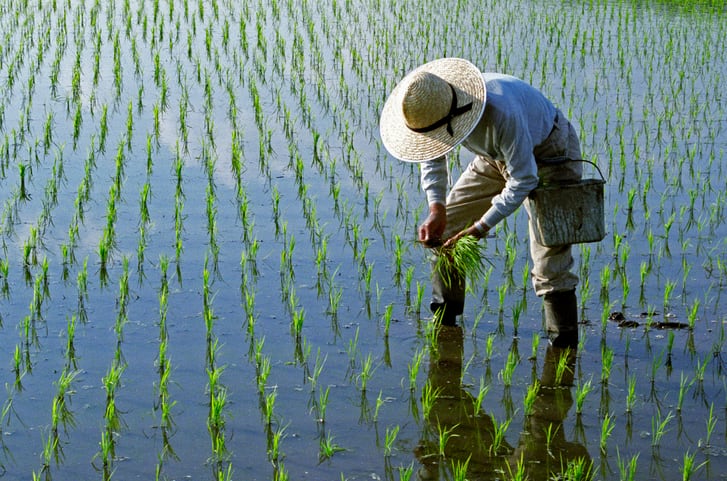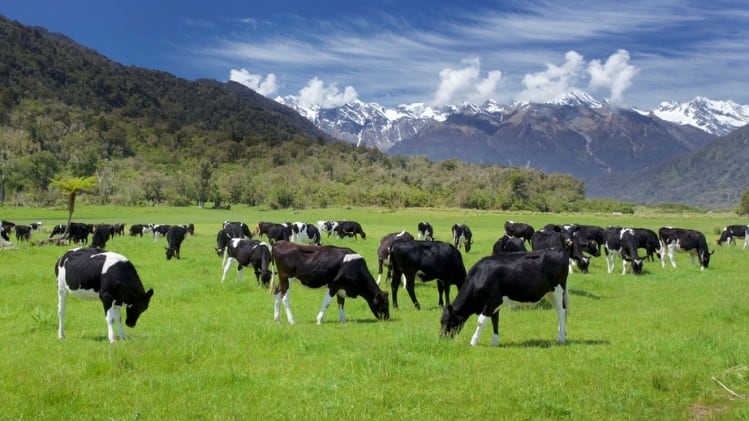The report, titled The Asia Food Challenge: Decarbonising the Agri-Food Value Chain in Asia, and produced by PwC, Rabobank, Temasek, and Terrascope, highlights key problem areas in the Asian agri-food sector and proposes solutions to address the pressing issue of carbon emissions.
Major emission contributors and problem areas
The report identifies five primary emission contributors in the Asian agri-food sector: rice cultivation, fertiliser use, deforestation, rearing of ruminant livestock and swine, and food loss and waste. These areas collectively contribute to half of all emissions from the Asian agri-food sector.
Asia emits 43% of the world's farming-related CO2-equivalent emissions, emphasising the urgent need for mitigation strategies. Rice cultivation, a major practice in the region, is a significant source of methane emissions due to the flooding of rice paddies, with methane being 28 times more potent than CO2 as a greenhouse gas over a 100-year period.
Pre- and post-harvest emissions are also highlighted, with Asia accounting for 60% of global nitrogen fertiliser usage despite having only 35% of the world's agricultural land. Inefficient irrigation practices, along with food loss and waste, contribute to the region's high emissions.
On a more positive note, emissions from land use change (e.g., deforestation) in Asia are comparatively lower, accounting for 7% of agri-food emissions. The report also acknowledges a reduction of 60% from 2015 to 2020, driven by positive actions within the palm oil industry.
Improvement opportunities and digitalised solutions
The report emphasises the potential for Asia to enhance the productivity of its agri-food system, citing the importance of technology adoption and increased efficiency at a small-holder level. With 60% of the world's small-holder farms situated in Asia, targeted investments in technology and practices are crucial for reducing the productivity gap.
Digital technology is identified as a key tool to address the challenges faced by small-holder farmers. The aggregation of small-holders with improved connections across the value chain is seen as essential to boosting productivity, accessing markets and fostering sustainability. A demand-driven agricultural production platform enabled by digitalisation is anticipated to reduce food loss, waste, and transport emissions.
Engaging smallholder farmers is identified as a critical aspect of emissions reduction, with considerations for land ownership rights to increase small-holder security. Consumers are urged to drive change through their purchasing decisions, focusing on lower-emission foods and reducing over-buying to minimise food waste.
Key role of carbon markets
The report underscores the importance of carbon markets in driving change, suggesting that the Asian agri-food sector is well-suited to generate revenue from these markets. The potential for carbon credits and offsets is highlighted but challenges such as measuring emissions and establishing global standards must be addressed to enhance corporate trust in the voluntary carbon market.
In recent years, the agri-food technology sector has seen a surge in global investment, with a focus on Western assets. However, Asia's agri-food value chain faces unique challenges, particularly in addressing carbon emissions. The discrepancy in early-stage investment between the US and Europe, — approximately 11 times greater per dollar of produce — underscores the need for tailored solutions for Asia's small-holder farms.
Investors have predominantly targeted Western agri-food technologies, leaving Asia with under-developed production systems, logistical challenges and insufficient supporting infrastructure. The disparity in investment levels reflects the differing stages of development between Western and Asian agri-food value chains.

Private capital — including private equity (PE), sovereign wealth funds, and venture capital (VC) funds — plays a crucial role in agri-food technology investments. Notably, 23% of early-stage funding deals in China between 2020 and 2022 were from large, state-backed Chinese agri-businesses.
Upstream investments in Asia, particularly in China and India, focus on bio-technology, farm robotics and machinery tailored to the region's needs. However, funding complexities have arisen due to the independent nature of small-holder farms in Asia compared to the leasing model in China.
Asia’s agri-food sector presents ongoing investment opportunities, with near-term prospects in machinery, robotics and simple technologies like irrigation. Mid-term opportunities include biologicals, advanced plant nutrition, genetics and innovations in packaging. Infrastructure investments in processing, storage, cold chain and waste valorisation are also crucial.
Key drivers of investment in agri-food include population growth, a rising middle class, urbanisation, technological adoption in the upstream, sustainability and regional governments’ focus on food security.
Opportunity and urgency
To address carbon emissions, companies in the Asian agri-food sector are urged to embark on a decarbonisation journey. The first step involves accurate measurement of emissions across the value chain. However, challenges in measuring Scope 3 emissions, particularly in the multi-layered agri-food value chains, present significant hurdles. Issues such as traceability, data maturity and resource constraints complicate emission measurement processes.
A case study on the challenges in emission measurement reveals that Terrascope, a Singapore-based enterprise-grade, end-to-end decarbonisation software-as-a-service (SaaS) platform, has identified three decarbonisation levers for the rice value chain: alternate wetting and drying (AWD), site-specific nutrient management (SSNM) and hermetic storage bags. These levers have shown promising results in reducing water usage, fertiliser leakage and post-harvest losses, contributing to lower emissions.
The report repeatedly emphasises the urgency of decarbonising Asia's agri-food sector, which accounts for 50% of emissions in Southeast Asia and 45% in South Asia. While solutions exist, immediate action is required to kickstart the decarbonisation journey. Large organisations' commitments, progress in measuring Scope 3 emissions, platforms for engaging with small-holders and growing global awareness of climate change provide a conducive environment for action.
COP28, scheduled for the end of 2023, presents a significant opportunity for global alignment on climate action. The call for coherent actions, driven by global and country-level roadmaps, emphasises the need for functioning carbon markets in agri-food to sustain momentum and promote sustainable practices across the value chain.
Future roadmap: Investment potential and coordinated action
Despite Asia transitioning away from agriculture in its economies, the report sees significant investment potential in upgrading the farming sector. Investments in technology and infrastructure are deemed essential to bridge the productivity gap and increase returns per hectare of arable land.
The report also calls for coordinated action from governments, farmers, companies within the food system and financiers to prioritise Asia's food system in achieving decarbonisation goals. Acknowledging the complexity of reducing emissions in the agri-food sector, the report suggests the establishment of global standards, verification of carbon markets and frameworks to expedite approval for new technologies.
The Asian Food Challenge extends beyond sustenance to encompass feeding nearly 60% of the world's population sustainably. Coherent action is imperative to secure food supply chains, protect the environment and address the pressing issue of climate change.
In conclusion, the report outlines a roadmap for coordinated actions, emphasising the urgency of addressing emissions in the Asian agri-food sector. With a focus on small-holder engagement, consumer-driven change and the key role of carbon markets, the report provides a comprehensive framework for stakeholders to contribute to sustainable and profitable agri-food practices in Asia.




